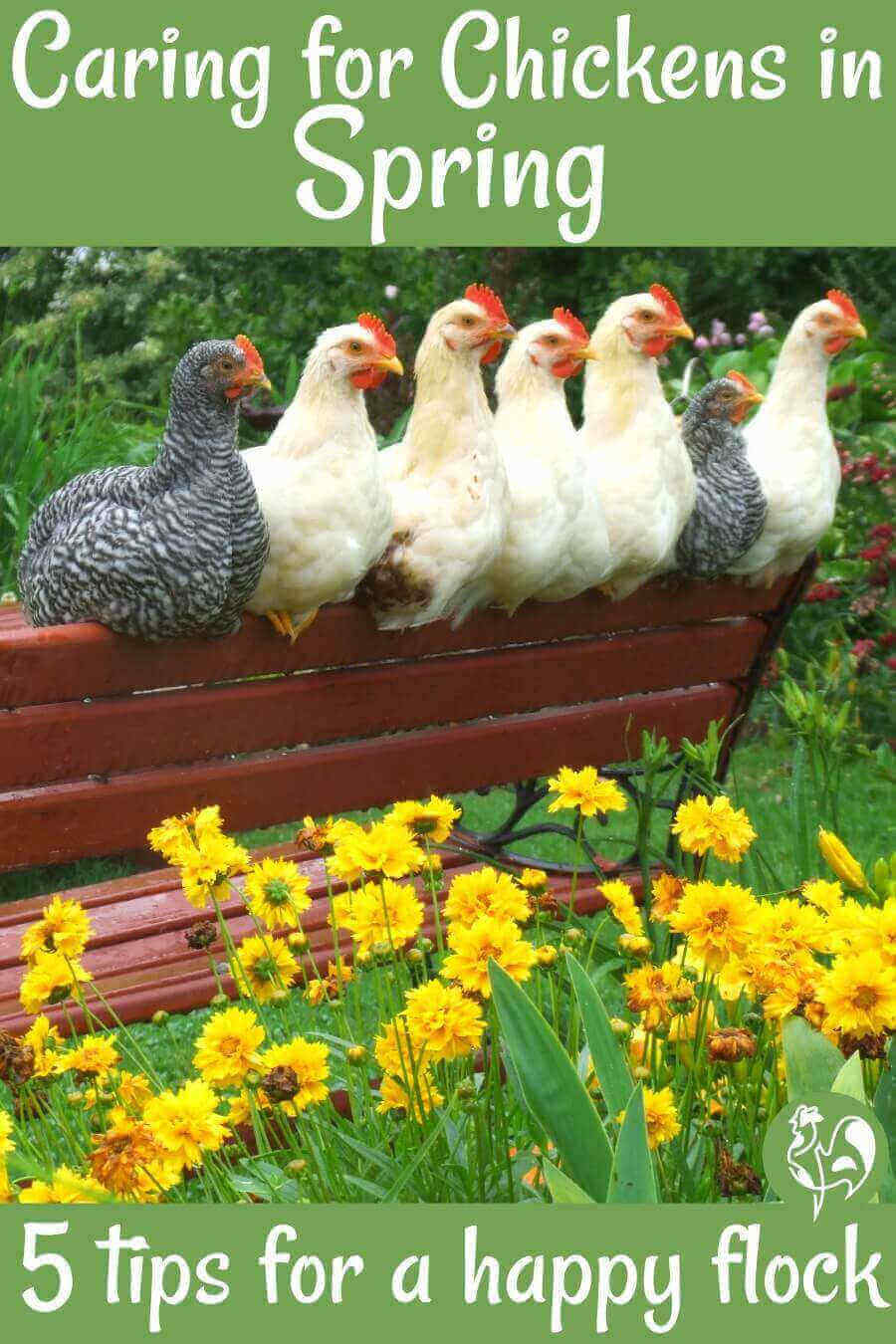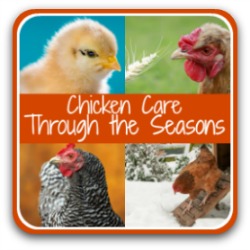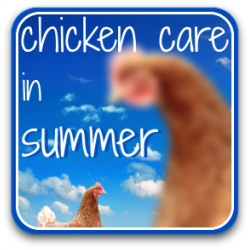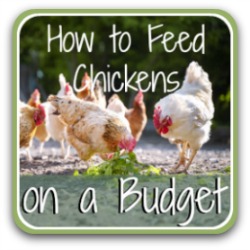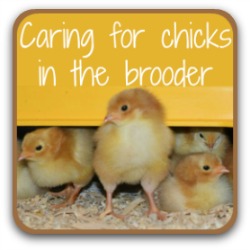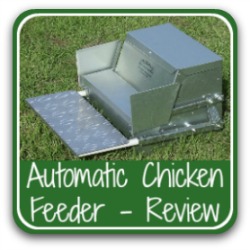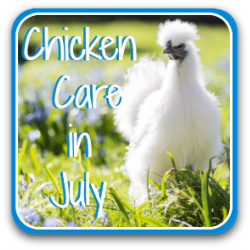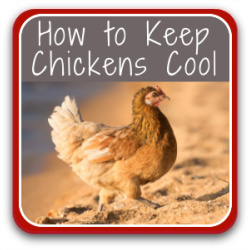- Home
- Monthly care
- Spring care
Caring for chickens in the Spring time.
We're all glad to see Spring - but does your flock need special care once the warmer weather and lighter nights start to roll around?
Caring for chickens in extreme conditions - hot summers and cold winters - can bring problems.
But the milder days of Spring can bring some issues we need to be careful to deal with, too.
Here are five things to watch out for when you feel the days getting warmer.
1. Protect against predators.
Spring for predators is above all a time when they have young to raise and care for.
Which means that they are more likely than ever to come looking for food. And poultry are often top of the menu.
Foxes are notorious for fearless hunting at this time of year, even in urban areas. Members of the weasel family also breed now.
These small mammals, like mink, stoats and pine martens may not kill chickens for food - they tend to kill for fun - but they do enjoy eggs. They also enjoy small rodents.
So mice, rats, or eggs left in nest boxes will attract them and you can expect to see them trying to get close to your chickens.
While they're there, they won't hesitate to kill a few hens on the way. They enjoy the chase, and the kills. It's how they get their kicks.
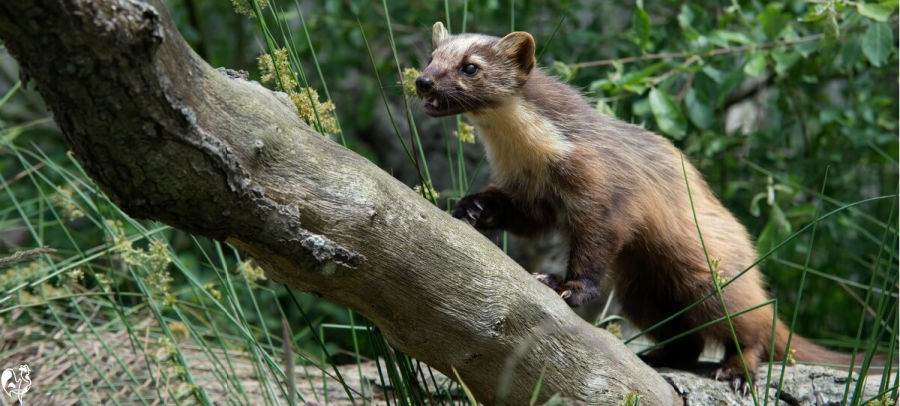 The pine marten, a deadly predator, breeds in the early Spring.
The pine marten, a deadly predator, breeds in the early Spring.So your first task in caring for your flock as Spring approaches is to make sure your coop and run are predator-proofed. Think about the predators you deal with in your area, and how they might access a free dinner.
Do they climb or dig? Can they unlatch locks? (Raccoons are ace at this). Can they squeeze through tiny spaces?
Now examine your coop area in minute detail. Think like a predator. Protect your flock's home as though it were Fort Knox.
For more details about how this can be done, see this article about the pine marten.
2. Hunt down those red mite.
The warmer weather and lighter nights can make caring for your flock easier. There are fewer concerns about whether they're warm enough, they can forage more easily and laying hens are producing those delicious eggs again.
But it can also bring some unwanted guests: red mite, for example.
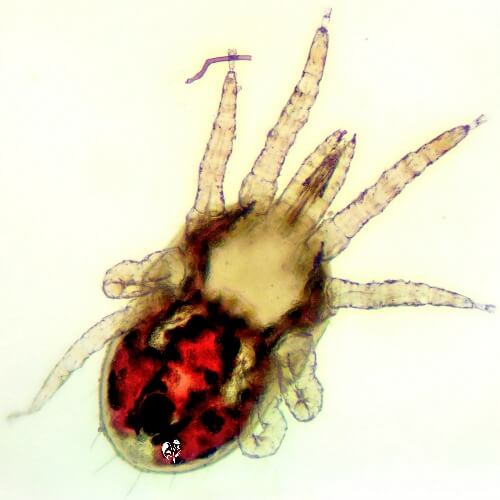 Red mite: watch out for them in the Spring coop.
Red mite: watch out for them in the Spring coop.These nasty little bugs can survive even the hardest of winters, and will begin to breed in earnest once the weather begins to warm up again.
They're often brought in by wild birds, which when Spring comes will hang around the coop to find grain and other food. After all, they're planning on bringing up babies, too!
So be aware. Don't leave grain outside where it will attract wild birds - who can carry Avian Influenza.
Keep it in a well secured container and feed your chickens from a bird and rat proof feeder.
Watch out for red mite in your coop. Are your hens reluctant to roost? Huddled up with ruffled feathers? Listless, with pale combs?
You may well have an infestation.
It's important to control it, because these creatures suck blood. And anaemic chickens can become very sick very quickly.
There's more about mites and how to control them in my e-book, "Raising Healthy Chickens", which is free when you sign up to my newsletter. Find more information by clicking on this link.
3. Beware the broody hen!
It's Spring. A time when a hen's thoughts turn to brooding babies.
Now, if you're keen to have chicks, that's fine. A good broody hen is something to be cherished.
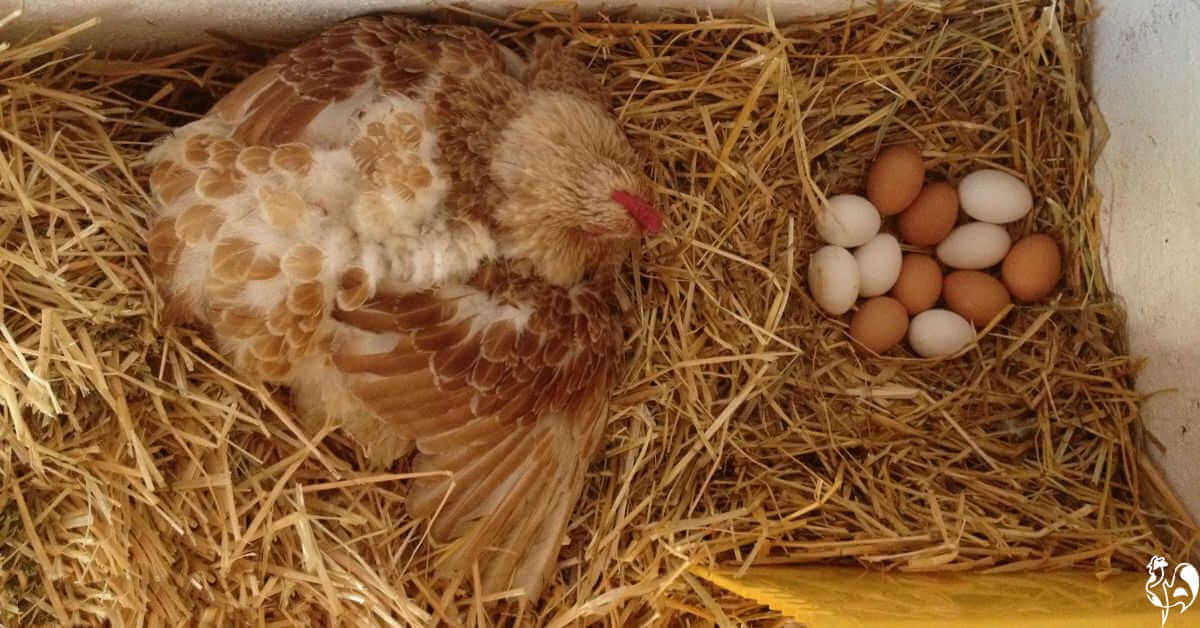 Henrietta was going to sit on this nest no matter what!
Henrietta was going to sit on this nest no matter what!If you're not so keen, though, it can be a nuisance. Eggs go missing, the hen will do her best to hide away from the world, she'll be reluctant to eat or drink and any attempts to remove her from the nest will result in a hissy fit the likes of which you've never seen.
There are many articles about how to "break" a broody hen. Personally, I always try to do it as gently as possible.
At first, I just remove the eggs from underneath her, and collect as regularly as possible so that she doesn't have the chance to hoard more.
It doesn't always work - I've had a hen sitting on as many as 24 eggs.
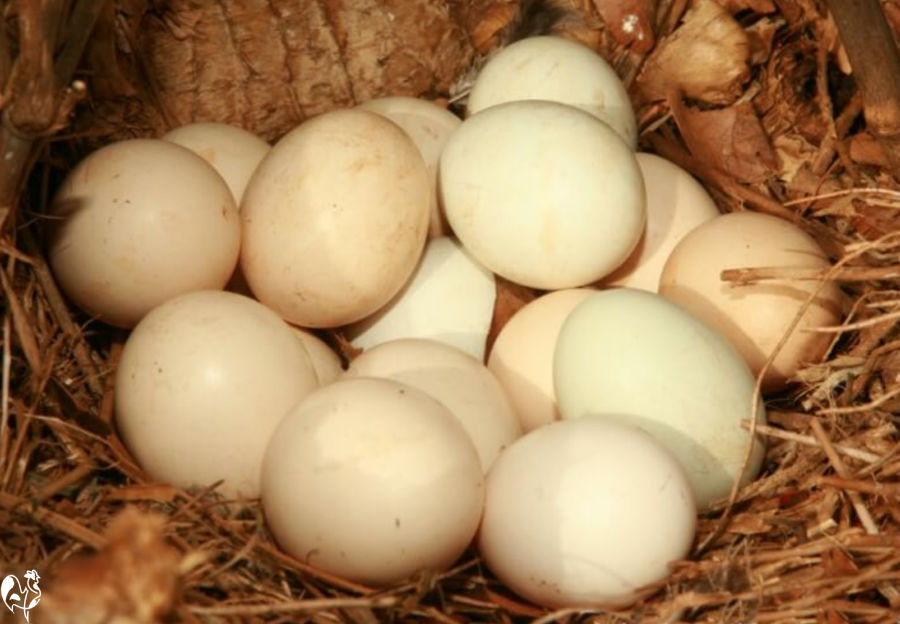 A clutch of eggs I found in my coop when I removed a broody hen.
A clutch of eggs I found in my coop when I removed a broody hen.So if you have a situation where your broody, overcome by the rising hormones that Spring brings, insists she wants to sit on the nest and not get off, and you're equally insistent that you don't want any more chicks, you may have to resort to isolating her.
How to do it? Have a look at this article which goes into detail about when and how to isolate a hen with the least possible negative effect.
Want to see what a broody looks like when she doesn't want to be isolated? Have a look at this video of Miss Matilda - one of my most determined broody hens.
The problem is, she's a Wyandotte - not known for their broodiness. And, true to breed, she will sit on eggs for a day or two and then gets bored, so abandons them.
It may sound a little harsh but please, don't worry about her - she soon settled down. On this occasions it only took a day of isolation to persuade her that caring for chicks was something to be postponed for the time being.
4. Don't get complacent - watch out for cold snaps.
Weather patterns these days can be unpredictable. A balmy April day can be followed by hailstones and snow showers.
So, be vigilant. Remember that if the weather suddenly turns cold, your main caring task will be to ensure your flock's water supply is kept unfrozen and the coop is free from draughts.
This article will help you decide on a watering system for your little chicks, and can also be applied to adults.
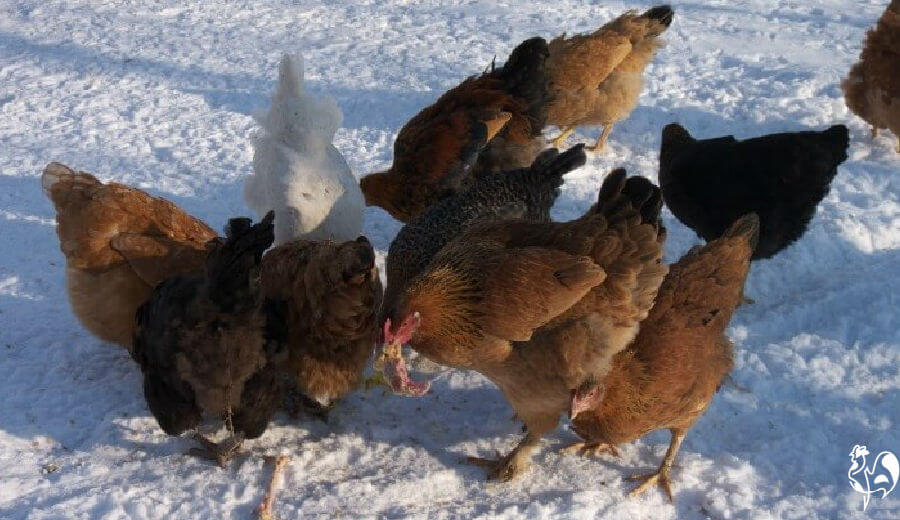 Cold snaps - don't let them catch you unawares!
Cold snaps - don't let them catch you unawares!Your chickens will keep themselves warm, though - no need to add heat lamps into the coop. They cause fires, and really are not necessary even in extreme conditions.
If you really want to add heat to your coop, or you have babies in your brooder and think it's still a bit too chilly for them to go outside, take a look at this heat source. It's the one I always use, and it's completely safe.
5. Look forward to the patter of tiny feet!
For many people (including me), Spring plus chickens equals only one thing - time to hatch! Those cute, fluffy babies are just too delightful to resist.
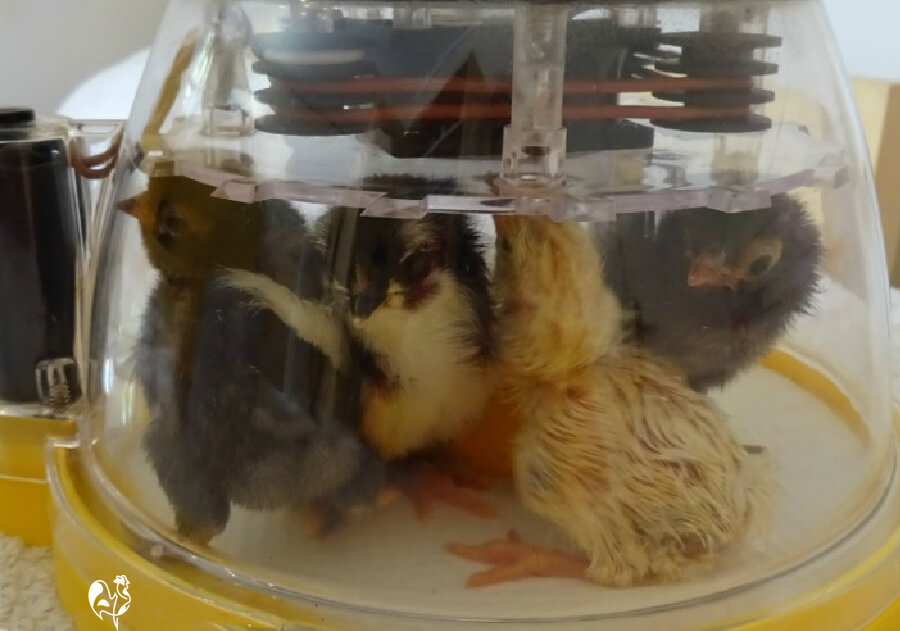 Some newly hatched chicks drying off in my favourite Brinsea incubator.
Some newly hatched chicks drying off in my favourite Brinsea incubator.Incubating and hatching is really beginning to pick up now. Fertility is at its height in the Spring, and the hens should be back to full production with lighter nights and warmer weather.
Is this something you'd like to do? Feel you're not quite sure how you'd go about caring for those fertile eggs and baby chicks?
You'll find more details about how to incubate and hatch in my step by step series, 'Hatching Happy Chickens'. Click on this link to find out more.
So there you have it!
Caring for your flock in Spring is much easier and less stressful than at some other times of year. The weather is improving, the flock can happily entertain themselves foraging for food, and the patter of tiny chick-feet is in the air.
It's one of the best times to revel in the pleasures of raising chickens.
Enjoy!
Other pages you may find useful.
- Home
- Monthly care
- Spring care
